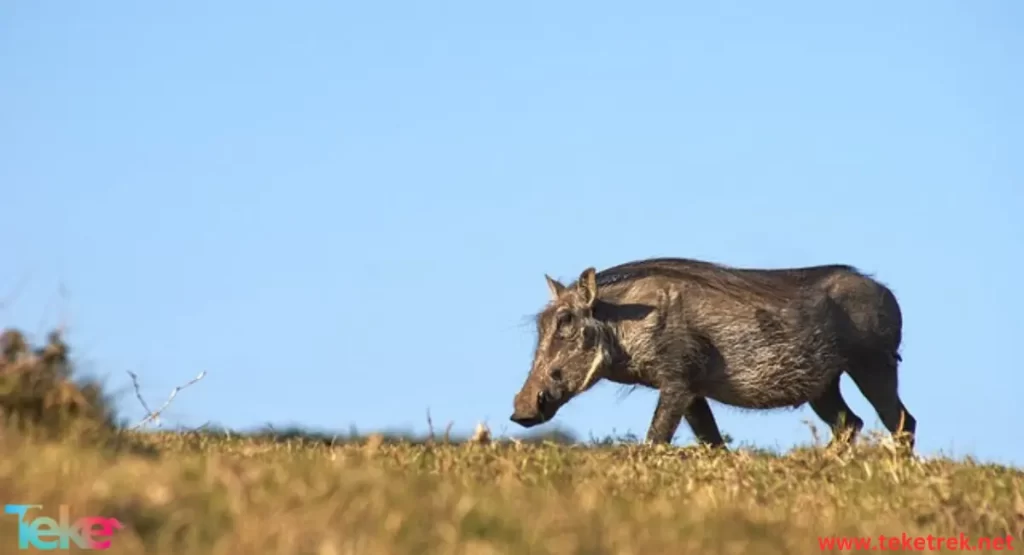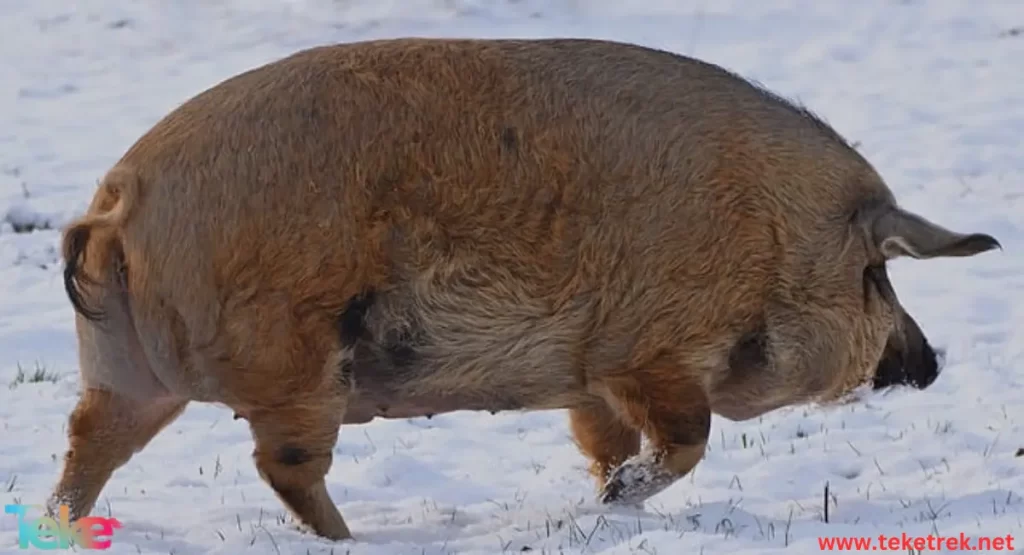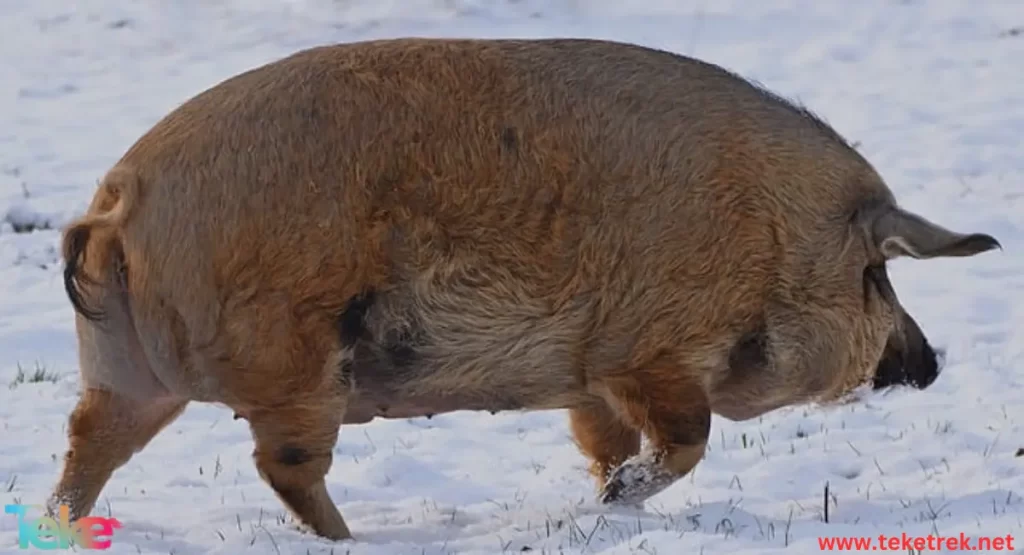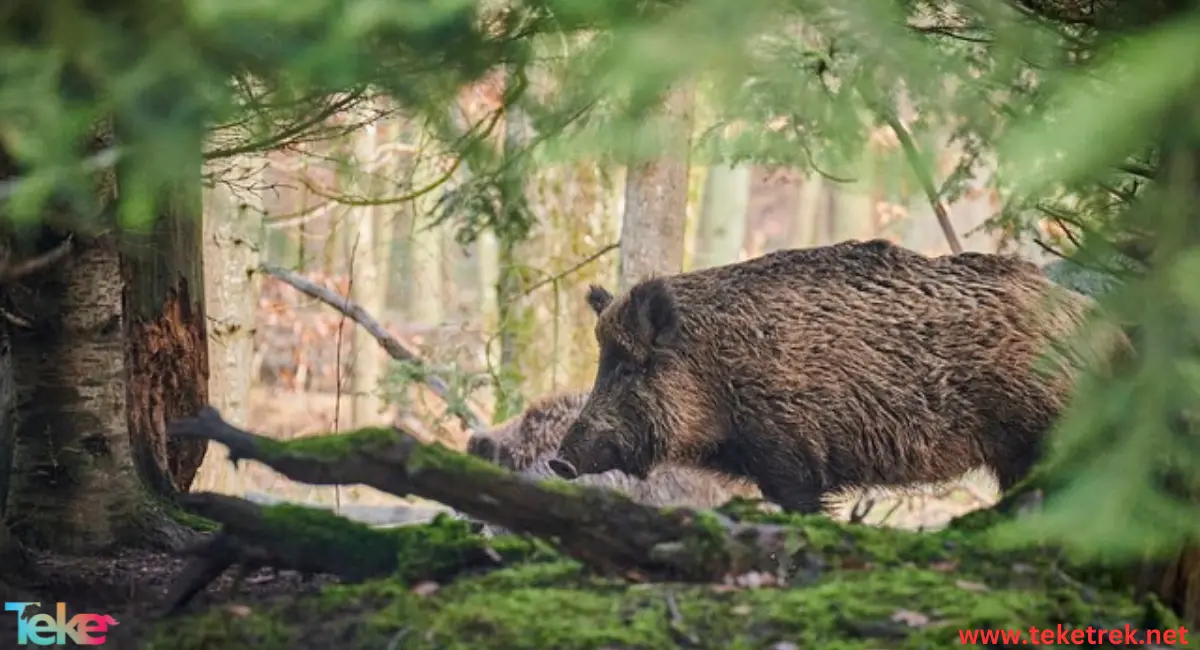Pigs are animals spread throughout most parts of the world.
Pigs are bred in fields and designated farms due to their importance. They provide humans with many useful materials, including pork, pig fat, leather, as well as glue, fertilizers, and many medicines.
This article on TekeTrek Website is dedicated to discussing pigs, their characteristics, lifestyle, and diet.
What is the scientific name of pigs?
- The pig is a mammal belonging to the order Artiodactyl and the family Suidae, also known as the even-toed ungulates family.
- The family is also divided into four to eight genera. Pigs, both domestic and wild, belong to the genus Sus. What is the description of a pig?
Morphological Characteristics of Pigs
- The length and weight of pigs vary depending on the species. On average, their weight ranges from 35 to 350 kilograms, and their length ranges from 85 to 220 centimeters.
- The skin color of pigs also varies by species, ranging from brown, gray, white, to shades between pink and red.
- Pigs have cone-shaped upper tusks on each side of the front of their mouths. These tusks are curved upwards and protrude from the mouth.
- Pigs are characterized by a short neck with a long, tapered head.
- The pig’s nose can move independently of the head.
- Pigs have small eyes and long ears, in addition to having four toes on each foot. The middle toes are flattened and have hooves.

Pig Breeds
- Different breeds of pigs are classified according to their size, ranging from large breeds with relatively thick Pig fat layers to smaller breeds.
- Large breeds typically weigh at least 100 kilograms, with some reaching up to 300 kilograms.
- Medium-sized breeds weigh around 70 kilograms.
- There are also smaller breeds that weigh around 45 kilograms.
Here are the main breeds of pigs:
- Yorkshire:
This breed has gained the greatest popularity in North America. Yorkshire pigs have pink skin and erect ears.
- Duroc:
This breed is characterized by its solid red color, with body color ranging from chestnut to dark rust red. Duroc pigs are very popular due to their longevity.
- Yorkshire Terrier with Black and White Points:
This breed has white markings on its four legs, tail, and face.
- Chester White:
Known for their longevity, Chester White pigs are renowned for their excellent maternal instincts.
Uses of Pigs in Life Affairs
- Drugs and Pharmaceuticals: Pigs are believed to play a significant role in medicine. Important substances are extracted from their skin because they share a variety of physiological and anatomical similarities with humans. The organic system of pigs is proven to be 80-90% similar to that of humans. These similarities make them a natural fit for testing medical products, including pills, injection capsules, and creams, for drug production.
- Leather: This is one of the most common uses. Pig leather is used to manufacture clothing, such as coats and leather jackets. Pig leather is also used in the production of leather barrels and musical drums due to its durability and suitable nature.
- Violin Strings: Pig intestines are used to make violin strings. The use of pig intestines for violin strings is primarily due to their ability to withstand harsh conditions in their intestines, making them suitable for continuous use.
- Explosives: Pigs are utilized in the development of explosives and dynamite. Oils, especially glycerin extracted from pigs, are used. So far, gelatin found in pig bones has been found to help in transferring gunpowder into a rifle shell.
Habitats of Pigs
Originally, pigs inhabited parts of Europe and Asia. Domestication began a long time ago. Humans kept pigs as livestock and companion animals, taking them wherever they went. Today, wild pigs live all over the world. Pigs can be found on many remote Pacific islands. Pigs prefer to live in pastures, wetlands, forests, and savannas.
What Do Pigs Eat?
In the wild, pigs consume everything from leaves, roots, and fruits to small rodents and reptiles. On farms, pigs eat commercially-made feed, primarily consisting of corn in the United States and barley in Europe. Pigs are known for their foraging behavior, endlessly searching for tasty treats. This rooting behavior is an important and beneficial aspect of their ecosystem. Pigs use their strong snouts to root through soil in search of roots and bulbs, creating soft ground for new plant growth. Although pigs primarily eat a diet of leaves, roots, fruits, and flowers, they are omnivores. Sometimes, pigs eat small rodents, reptiles, insects, and anything else they come across.
Natural Behavior of Pigs
- In the wild, pigs spend time wallowing in mud, which not only provides them with cooling in warm weather but also serves as a form of enrichment and socialization.
- Pigs lack efficient sweat glands, so wallowing is necessary for regulating body temperature.
- When the mud dries, it cools the pig’s skin surface, helping to prevent heat stress and other issues.
- Mud also forms a protective barrier, preventing flies and other parasites from biting the pig, thus aiding in protection against diseases carried by many flying insects.
- The size and weight of wild pigs vary greatly depending on the breed, diet, and habitat. Wild pigs can weigh between 130 to 300 kilograms.
- Despite their large size, pigs are surprisingly fast, enabling them to evade predators and avoid danger.
- When the pace of pigs is not sufficient to ensure their safety, many breeds possess formidable tusks. Tusks in pigs can grow to lengths exceeding 7 centimeters. They are sharp weapons as well as a deterrent to any potential competitor.
Reproduction and Lifestyle of Pigs
- Pigs naturally live in small social groups resembling our immediate families.
- These groups typically consist of 3 or 4 females and their offspring.
- Male pigs leave when they reach maturity to seek their own companions.
- Wild pigs tend to give birth once a year, usually in spring when food is abundant. They can have anywhere from 5 to 14 piglets per litter.
- Most hoofed animals give birth to only one or two offspring at a time. The pig is the only animal in this group that can have litters of this size.
- Before giving birth, the sow exhibits her natural instincts by nesting. She gathers materials like leaves, straw, and grass to build a comfortable and secure nest for her piglets.
- Newborn Baby pig stay warm and safe for about 10 days, continuing to drink their mother’s milk for about 3 months before weaning.


FAQ
- Is the taste of pork delicious?
The deliciousness of pork depends on personal tastes and different cultures. Some people find pork tasty and savory, preferring it in their daily meals, while others prefer to avoid it due to religious, cultural, or health reasons.
- Does the pig associate with any other animal?
No, generally pigs do not permanently associate with other animals in the wild.
- Why should we not eat pork?
Some reasons why some people prefer not to eat pork include religious and cultural values, concerns about public health and food interactions, as well as environmental concerns and animal welfare values.
- What does pig eat?
Pigs are omnivores, meaning they eat both plant and animal matter. In the wild, they consume a variety of foods such as roots, fruits, leaves, insects, small mammals, and even carrion.
- Why do pigs eat piglets?
Pigs may eat piglets for several reasons, including stress, hunger, or in rare cases, due to aggressive behavior within the group. This behavior can also occur if the sow (female pig) perceives her piglets to be weak or unhealthy, leading her to cannibalize them as a survival instinct to conserve resources for the stronger offspring.
- Are pigs good pets?
Pigs can make good pets for the right owner, but they require specific care, space, and attention. They are intelligent animals that can bond with humans and display affection. However, potential owners should be aware of their size, dietary needs, and the commitment required to care for them throughout their lives.
In conclusion, pig farming is widespread in various countries worldwide, primarily for medical purposes. Scientific research centers continue to explore the possibility of utilizing pig organs for transplantation into humans, or extracting important medical substances. However, due to religious considerations, pig farming is not practiced in Muslim countries.






